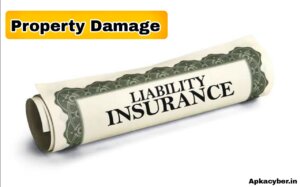
When you get behind the wheel of a car, you’re taking on a significant responsibility. Accidents can happen in the blink of an eye, and even a minor fender-bender can result in costly damage to someone else’s property. This is where property damage liability insurance comes into play. It’s one of the most essential components of auto insurance, yet many drivers don’t fully understand what it covers or why it matters. This article will dive deep into what property damage liability insurance is, how it works, why it’s required in most places, and what limits you should consider.
Understanding the Basics
At its core, property damage liability insurance is a type of coverage that helps pay for damage you cause to someone else’s property while operating your vehicle. This typically includes other people’s cars, but it can also include structures like fences, mailboxes, buildings, or utility poles.
Let’s say you’re driving through a neighborhood and you accidentally misjudge a turn, running into a parked car. The damage to that car is your financial responsibility because you were at fault. If you have property damage liability insurance, your insurer will cover the repair costs up to your policy’s limit. Without it, you would have to pay out of pocket.
It’s important to note that this type of insurance does not cover damage to your own vehicle. For that, you would need collision coverage or comprehensive coverage, depending on the circumstances.
Legal Requirements
In almost every U.S. state, some form of liability insurance is required by law to operate a vehicle. This typically includes both bodily injury liability and property damage liability. The legal minimums vary by state, but failing to carry the required coverage can result in serious penalties, including fines, license suspension, and even jail time in extreme cases.
For example, a state might require drivers to carry a minimum of $25,000 in property damage liability coverage. This means your insurance company would pay up to $25,000 for damage you cause to another person’s property. If the damage exceeds that amount, you are personally responsible for the difference.

What Does It Cover?
Property damage liability insurance provides protection in a variety of scenarios. Here are some common examples:
-
Damaged Vehicles: If you rear-end another car at a red light, your insurance will pay for the damage to that vehicle.
-
Public Property: If you lose control on a slippery road and hit a lamppost or a traffic sign, the city or county can file a claim with your insurer for the cost of repairs.
-
Private Property: Say you swerve off the road and crash into someone’s fence or garage door. Property damage liability will cover the repairs.
-
Legal Costs: If the other party decides to sue you for damages, your property damage liability insurance can help cover your legal defense and any settlements or judgments, up to your policy limit.
What It Doesn’t Cover
As crucial as it is, property damage liability insurance has limitations. Here’s what it does not cover:
-
Your Own Car: If you’re at fault in an accident and your car is damaged, property damage liability doesn’t help. You’d need collision coverage for that.
-
Injuries to Others: That’s the role of bodily injury liability insurance.
-
Your Medical Bills: If you’re injured, your personal injury protection (PIP) or medical payments coverage (MedPay) would apply.
-
Damage Beyond Policy Limits: If the cost of damage exceeds your policy limit, you are responsible for the difference.
-
Intentional Damage: If you purposely cause damage, your insurer won’t cover it.
How Much Coverage Do You Need?
While it’s tempting to go with the minimum required coverage to save money, that can be risky. Consider this scenario: you cause a pile-up that damages four vehicles, with a total cost of $60,000. If your property damage liability limit is $25,000, you’ll have to come up with the remaining $35,000 yourself.
That’s why many insurance experts recommend higher limits — often $50,000 to $100,000 or more — to provide a financial cushion in the event of a major accident. Higher limits mean slightly higher premiums, but they can save you from devastating out-of-pocket expenses.
Policy Limits: Split vs. Combined Single Limit
When you buy auto insurance, you’ll see two types of policy limits: split limit and combined single limit (CSL).
-
Split Limit: This separates coverage into three amounts — bodily injury per person, bodily injury per accident, and property damage. For example, 100/300/50 means $100,000 for injury per person, $300,000 per accident, and $50,000 for property damage.
-
Combined Single Limit: This is one lump sum that covers both bodily injury and property damage. For example, a $500,000 CSL can be used however needed, offering more flexibility in serious accidents.
Factors That Affect the Cost of Property Damage Liability Insurance
Several factors influence how much you’ll pay for this type of coverage:
-
Driving Record: A clean record usually means lower premiums. Tickets and accidents raise red flags.
-
Location: If you live in a densely populated city with a high accident rate, expect higher premiums.
-
Vehicle Type: Expensive or high-performance cars may increase your rates.
-
Age and Experience: Younger, less experienced drivers tend to pay more due to higher risk.
-
Credit History: In some states, your credit score can impact your insurance premium.
-
Coverage Limits: The higher your limits, the more you’ll pay — but you’ll also be better protected.

Claims Process
If you’re in an accident and you cause property damage, here’s what typically happens:
-
Report the Incident: Notify your insurer as soon as possible. Provide photos, a police report (if available), and details of the other party involved.
-
Investigation: Your insurance company will investigate the claim to determine fault and assess the damage.
-
Payment: Once fault is established, your insurer will pay the other party for the damage, up to your coverage limit.
-
Deductibles: Unlike collision or comprehensive insurance, property damage liability typically does not have a deductible.
Real-World Examples
To better understand how property damage liability works, here are a few hypothetical examples:
-
Example 1: You back out of a driveway and hit your neighbor’s parked car. The damage is $3,000. Your insurance pays this amount directly to the neighbor’s repair shop.
-
Example 2: You lose control on a snowy road and hit a store’s front window, causing $20,000 in damage. If your coverage limit is $25,000, your insurer covers it all.
-
Example 3: You crash into several parked cars, causing $100,000 in damage. If your policy only covers up to $50,000, you’re legally responsible for the other $50,000.
High-Risk Drivers and SR-22 Requirements
If you’ve had serious driving violations — like a DUI or driving without insurance — you might be required to file an SR-22 form, proving you have the state-mandated minimum coverage, including property damage liability. In such cases, your insurance costs will likely be much higher, but maintaining continuous coverage can eventually help lower your rates over time.
Umbrella Policies for Added Protection
For those who want even more financial protection, an umbrella insurance policy can be a smart investment. Umbrella coverage kicks in when your liability limits are exhausted, covering the remainder up to your umbrella policy limit. For example, if your auto policy covers $50,000 in property damage but the total cost is $100,000, an umbrella policy can cover the extra $50,000.
These policies are especially useful for individuals with significant assets they want to protect in case of a lawsuit.

Final Thoughts
Property damage liability insurance may not be the flashiest part of your auto insurance policy, but it’s one of the most important. It’s your financial shield in the event you accidentally damage someone else’s property. Without it, you risk not only steep out-of-pocket costs but also potential legal consequences.
While most states require minimum coverage, it’s wise to consider increasing your limits to better protect yourself. Accidents are unpredictable, and a single mistake can result in tens of thousands of dollars in damage. Ensuring that you have sufficient coverage can make the difference between a manageable mishap and financial ruin.
Whether you’re a new driver or someone reviewing your current policy, take the time to understand your property damage liability coverage. Talk to your insurance agent, compare options, and make sure you’re covered for more than just the bare minimum. Your peace of mind—and your bank account—depend on it.